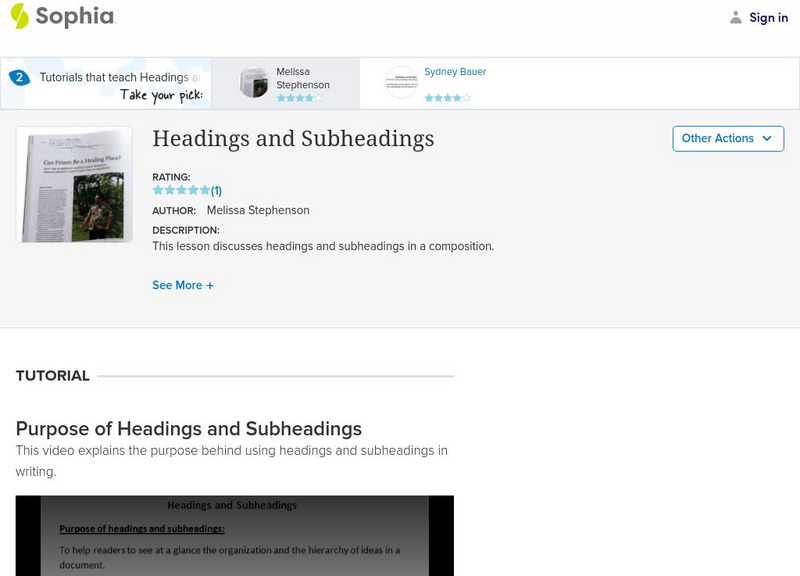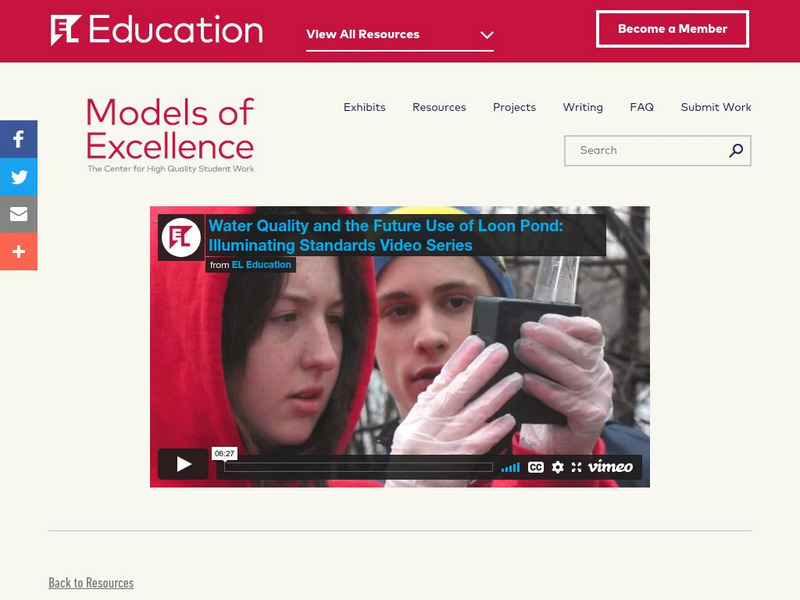Better Lesson
Better Lesson: W.3.2: Write Informative/explanatory Texts to Examine a Topic
Links to 56 lessons and activities that build student skills in standard W.3.2: Write informative/explanatory texts to examine a topic and convey ideas and information clearly.
Better Lesson
Better Lesson: Writing a Topic & Concluding Paragraph for the Essay
This lesson is a final step towards supporting young scholars to practice writing an informative/explanatory paragraph conveying complex ideas and presenting information clearly and accurately. Second-grade students can usually write a...
ReadWriteThink
Read Write Think: Searching Informational Texts
Online lesson allows elementary students to use prior knowledge, make predictions, and perform research on the Internet. Labeled "The Frog Beyond the Fairy Tale Character," lesson challenges students to examine print and online texts...
ReadWriteThink
Read Write Think: Expository Escapade: Detective's Handbook
Working on higher-level thinking skills with your readers is made easier with this lesson. You will have your learners connect with and analyze a mystery story at their grade-appropriate level. Lesson plan, printable worksheets, and...
ReadWriteThink
Read Write Think: Researching Information: Comparing Electronic and Print Texts
This lesson allows students to compare and contrast print text structure with that of an online site. Students work together and use worksheets in comprehending the informational text. CCSS.ELA-Literacy.WHST.6-8.7 Conduct short research...
EL Education
El Education: Sapling Rise a Micro Field Guide
Students create a field guide for a three foot by three foot plot of ground. Students name their plots, graph temperature, create an inventory and table to record observations, make illustrations, and write informational text based on...
Other
Ccss Literacy E Handbook: Informational Text: Understand Precise Vocabulary
A short explanation of the importance of using precise word choice in writing and using context clues to help you understand the meaning of precise words when reading. Click on Model to for an example with explanation and then click on...
Texas Education Agency
Texas Gateway: Synthesize Ideas in Informational/expository Text
[Accessible by TX Educators. Free Registration/Login Required] In this lesson, you will expand on your ability to read texts, synthesize them, and make choices based on the information you read. Finally, you will learn how to use textual...
Colorado State University
Writing@csu Guide: Understanding Writing Situations
In this guide, you can learn more about the situations in which writers and readers find themselves and the physical, social, cultural, and historical contexts that shape them. Click on each of the links on the right to learn about the...
ReadWriteThink
Read Write Think: Creating Magazine Covers to Summarize Texts
In this lesson, students will examine the ways in which a magazine cover's headlines and graphics express the main ideas of its articles. They will then use an interactive tool to create covers that summarize chapters of informational...
Utah Education Network
Uen: Cloud, Rain, and Fog
During these three days of lessons, 2nd graders will learn about weather from the nonfiction text by asking questions, and focusing on the text features of the book.
ReadWriteThink
Read Write Think: Lesson Plan: Audience, Purpose, Language in Electronic Messages
Lesson plan considers changes in writing style since the inception of e-mail and text messaging.
Other
Keys to Literacy: How to Write a Summary
Learn the seven steps to writing a summary of an informational text. Includes a summary template and completed examples.
ReadWriteThink
Read Write Think: A Picture's Worth a Thousand Words: Image to Narrative
This lesson, which can be adapted to fit with any picture you choose, works for students of all levels.
Other
Be Succinct! Writing for the Web
This article gives helpful information on how to write effectively for the web. Gives information on short texts, scannability, and hypertext structure.
ReadWriteThink
Read Write Think: m.l. King, Jr.: Identifying With a Hero
Lesson that attempts to help younger learners understand and identify with Martin Luther King, Jr. through reading, writing, listening, and speaking activities. Encourages students to attempt to live out King's "Dream," in their own lives.
Texas Education Agency
Texas Gateway: Reading Instruction: Content Area Reading Instruction
This website offers a free download of the Research-Based Content Area Reading Instruction booklet. The purpose of this booklet is to provide teachers with research-based and classroom-tested information about each of these aspects of...
Better Lesson
Better Lesson: A "How To" Lesson for the Gingerbread Loose in the School
Learning to follow directions is an essential skill needed for success in school as well as in life. Through participation in this lesson, kindergartners will learn the importance of following directions in a specified sequence. Included...
ReadWriteThink
Read Write Think: Comprehending Nonfiction Text on the Web
Contains plans for three lessons designed to improve comprehension of nonfiction, especially nonfiction texts on the web. It focuses on identifying text features, locating specific information, and generalizing that information. In...
Florida Center for Reading Research
Florida Center for Reading Research: Monitor for Understanding: Sum Summary! [Pdf]
A lesson plan in which students read a narrative or informational text and complete graphic organizers to help them write good summaries of the texts. Materials are included.
Sophia Learning
Sophia: Headings and Subheadings
This tutorial uses two short videos and a PDF handout to explain how and when to use headings and subheadings. Video 1 explains the purpose of headings and subheadings and why and when to use them; video 2 discusses how to format and...
EL Education
El Education: "Water Quality and Future Use of Loon Pond"
An online research report entitled "2007 Report on Water Quality and Future Use of Loon Pond" by ninth grade students from Renaissance Charter School in Springfield, Massachusetts. Students completed field work testing water and applied...
ReadWriteThink
Read Write Think: Building Word Knowledge Through Informational Websites
A lesson through which students identify, understand and work with important vocabulary words found in an online article on biodiversity. Based on the "Ten Important Words Plus" strategy that teachers can employ as part of vocabulary and...
Better Lesson
Better Lesson: Native American Petroglyphs Close Read Compare and Contrast
Students will read an article by Byron Loosle on the meaning of Native American symbols and compare that to a video clip of an actual Native American explaining the symbols. There is a difference of opinion and students will weigh both...

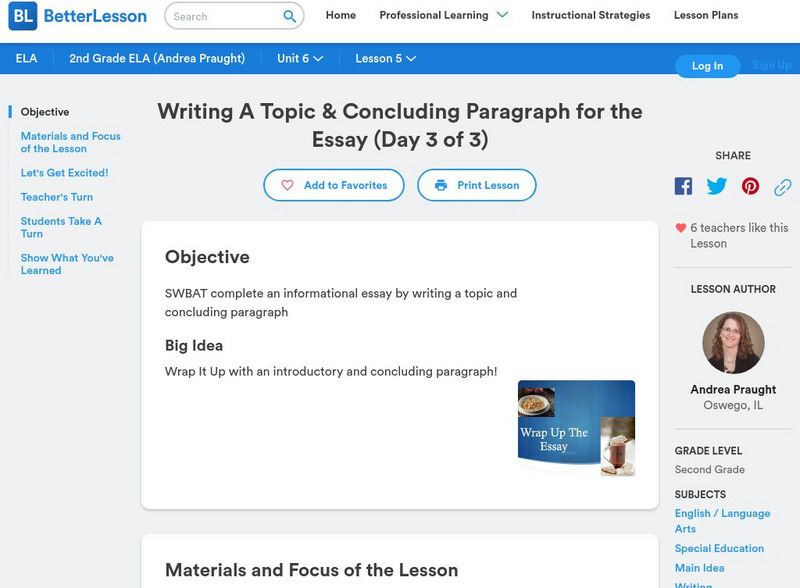







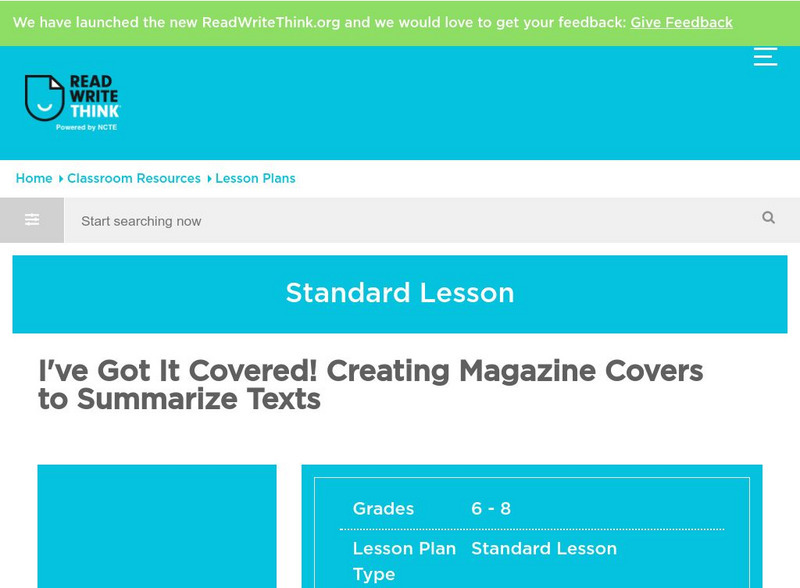





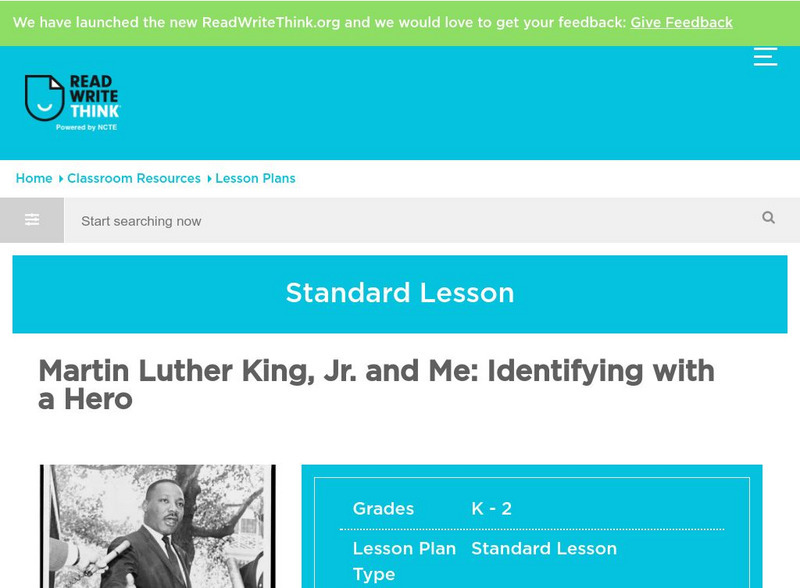
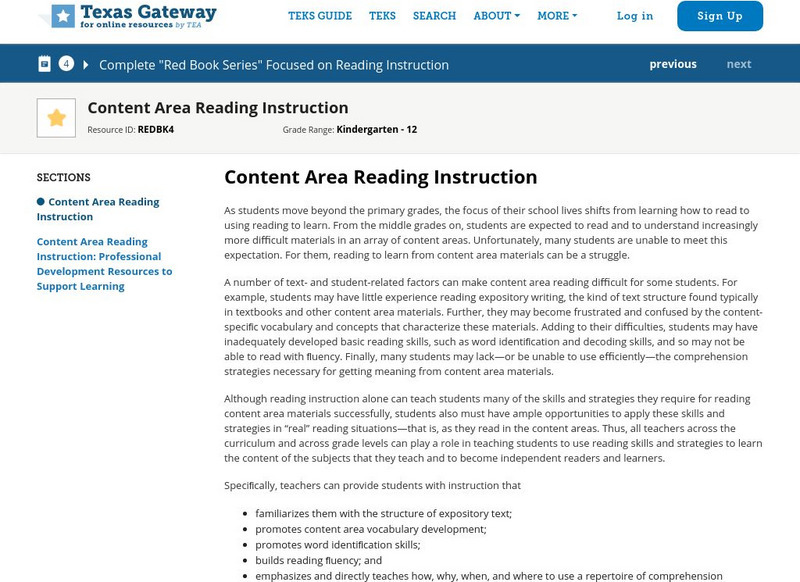
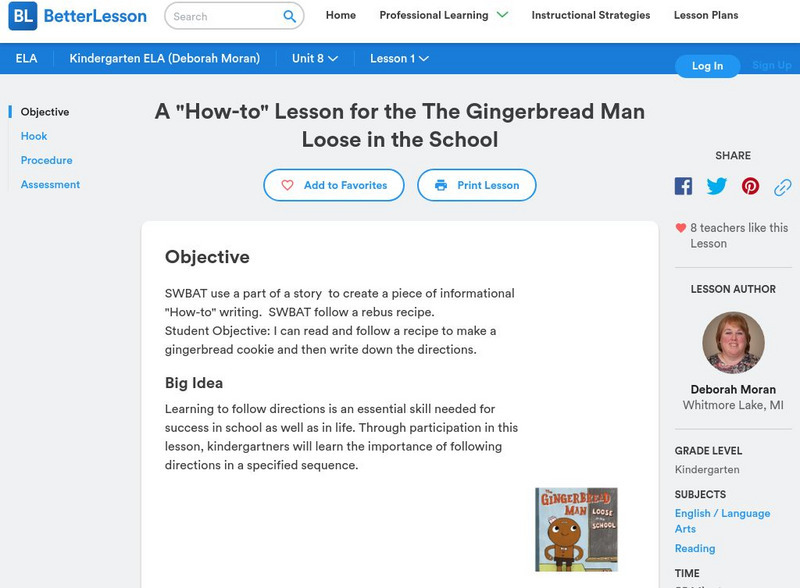

![Florida Center for Reading Research: Monitor for Understanding: Sum Summary! [Pdf] Lesson Plan Florida Center for Reading Research: Monitor for Understanding: Sum Summary! [Pdf] Lesson Plan](https://content.lessonplanet.com/knovation/original/509088-9fceb7ddd10dab1b4fb2d2cdfe6dce64.jpg?1661786991)
